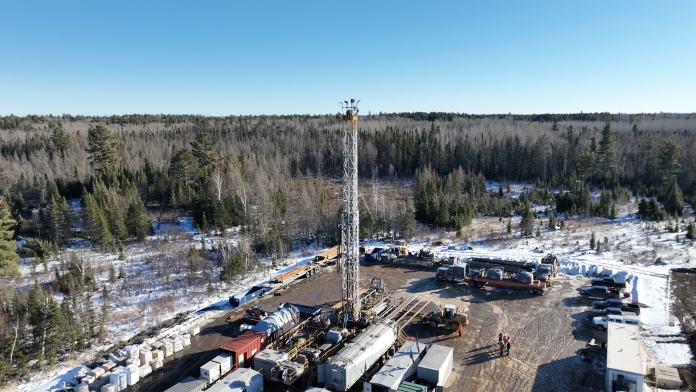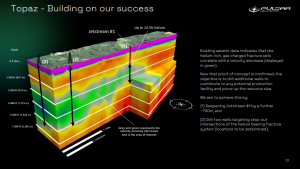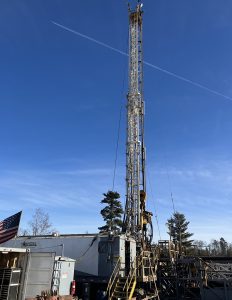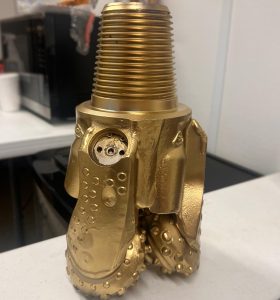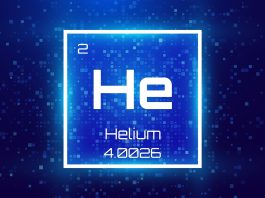Pulsar Helium Inc. has recently announced positive results from its Topaz helium project in Minnesota, positioning it among the top-tier global primary helium projects.
Pulsar is the first mover in Minnesota, and the Jetstream #1 appraisal well has demonstrated exceptional helium concentrations between 8.7% and 14.5%, with gas naturally flowing to surface.
This significant discovery not only confirms the presence of a significant helium occurrence but also underscores the potential for Topaz to become a major player in the global helium market.
Pulsar is moving Topaz forward with a resource calculation due in July and additional field activities, including seismic and drilling, scheduled for 2024.
Overview of Pulsar Helium Inc.
Pulsar Helium Inc. is a publicly-traded company listed on the TSX Venture Exchange under the ticker PLSR and on the OTCQB under the ticker PSRHF.
The company is dedicated to the exploration and development of primary helium assets, focusing on projects where helium is the primary economic driver rather than hydrocarbons.
Pulsar’s portfolio includes the Topaz helium project in Minnesota, USA, and the Tunu helium project in Greenland.
Pulsar is the first mover in both locations. Its compliment of staff includes helium pioneers, alongside gas and finance specialists.
The Topaz helium project
Location and geology
The Topaz project is located in Minnesota, approximately 100 kilometres north of Duluth, a regional centre supporting the vast iron ore mines of North America.
Resource extraction has occurred in the vicinity for over 150 years, and is the backbone of the local economy. As expected, key infrastructure is in place, with Topaz accessible by existing road networks, and grid power nearby.
The local workforce is highly skilled, negating the need to look abroad.
The project is situated on private mineral rights for which Pulsar has an exclusive lease. The company has also applied for additional leases in areas of interest with the State of Minnesota and additional private mineral rights holders. The State of Minnesota has also passed new helium-focused legislation, creating a clear pathway for project development.
The geology of the Topaz area includes some of the oldest rocks in North America, suggesting an excellent helium source rock. Helium is generated via the radiogenic decay of uranium and/or thorium – when they break down, a helium ‘alpha particle’ is created.
Older rocks, when emplaced, granite in particular, are usually well endowed in uranium and thorium. The stable tectonic conditions prevailing over the last billion years in the Topaz area may have allowed significant helium volumes to accumulate, and the crystalline rock units that overly the helium occurrence are excellent sealing units – preventing the loss of helium to the atmosphere.
Recent developments and results
The Jetstream #1 appraisal well at the Topaz project has been the focal point of Pulsar’s recent activities. The well reached a total depth of 671 meters (2,200 feet) and encountered remarkably high helium concentrations between depths of 533-671 metres (1,750 to 2,200 feet).
The flow testing recorded a maximum rate of 821,000 cubic feet per day, with helium concentrations ranging from 8.7% to 14.5%. These results are considered world-class, placing the Topaz project amongst the top tier of primary helium discoveries globally.
The Jetstream #1 appraisal well also demonstrated a rapid pressure rebound, with 70% pressure recovery within the first hour of post-flow shut-in, indicating the potential for a significant volume of gas.
Additionally, the presence of associated gases such as CO2, which exceeded 70%, has the potential to contribute to the project’s economics.
Jetstream #1 is a relatively shallow well compared to most industry peers and was designed to replicate the original discovery of helium made in 2011. Since this ‘proof of concept’ has been successful, the ongoing work program is to drill deeper and fully test the likely helium-bearing zone, a further ~700 metres (2,297 feet) as defined by existing seismic data.
The Jetstream #1 appraisal well is the first of its kind in the State of Minnesota, and Pulsar intends to use its success as fulcrum for further activities.
Legislative support and regulatory framework
In a significant development, the State of Minnesota enacted new legislation in May 2024 that includes provisions for helium exploration, production, and leasing on state lands.
This new regulatory framework allows the state to issue leases for the exploration and production of non-hydrocarbon gases, including helium, and Pulsar has since lodged applications for new leases in areas of interest.
The new legislation provides Pulsar with the certainty needed to move forward with its plans to take Topaz to production, creating a clear regulatory pathway for the project’s development.
Future work and expansion plans
Data collected from Jetstream #1 has been sent to Sproule International Ltd., the independent resource estimator, for an update on the resource estimate for the Topaz project. The results are expected in July.
Meanwhile, Pulsar is preparing for additional field activities, including seismic surveys, interpretation of a recently acquired airborne gravity survey, and preparation for further drilling – all scheduled to occur in 2024.
The proposed drill programme aims to deepen the Jetstream #1 well to assess the full extent of the helium-bearing zone as defined by existing seismic data.
In addition to potentially intersecting an additional helium-bearing reservoir, pressure is anticipated to increase at depth, contributing to increased gas flow rates to the surface. Two step-out wells are also proposed to further delineate and de-risk the resource.
Economic and strategic importance of helium
Helium is a critical component for various high-tech applications, including the manufacturing of semiconductors, fibre-optic cables, superconducting magnets in MRI scanners, and fuel systems in space rockets.
The USA is the world’s largest consumer of helium and year on year, foreign imports of helium to the USA have increased 80%. Reliance on foreign sources is fraught with geopolitical risk, and helium is also notoriously challenging to transport due to its small molecular size and propensity to leak.
Therefore, Pulsar aims to provide the USA with a steady and reliable domestic source of helium, a commodity that is becoming increasingly strategic due to its technology applications.
Ownership
Pulsar’s insiders and management own approximately 60% of its issued share capital, with the balance in public hands. The company’s founding shareholders are subject to an escrow arrangement, with their shares released over time until they are fully released by Q1 2027.
The top three shareholders are also directors of the Company, two of which are Pulsar’s co-founders. This highlights that management has ‘skin in the game’ and the drive to make Pulsar a success.
Technological and operational excellence
The success of the Topaz project is also attributed to the advanced technological and operational strategies employed by Pulsar.
The company has utilised state-of-the-art equipment and methodologies, including passive seismic (Ambient Noise Tomography), Vertical Seismic Profile (VSP), and wireline optical televiewer data collection, to gain a comprehensive understanding of the subsurface geology.
The integration of these technologies has allowed Pulsar to better understand the helium-bearing reservoir and optimise future drilling localities. The technical team is overseen by Josh Bluett, a pioneer in the industry with over ten years of helium experience.
Market outlook
The price of helium is more than 100 times that of natural gas and has increased steadily since 2000 (source: USGS). Recent price points include $625 per thousand cubic feet of helium gas and more than $1,000 per thousand cubic feet of liquid helium.
The increased demand for helium in technology applications and the scarcity of supply provide a positive outlook for future pricing.
US production has been in decline, attributed to ageing gas fields and the sale of the Federal Helium Reserve. This has created a production gap that has allowed Qatar, Algeria, and Russia to increase their production.
It is, however, unlikely that Russian supply unlikely to reach the USA for the foreseeable future.
Topaz: A significant advancement in helium exploration
Pulsar Helium Inc.’s Topaz project represents a significant advancement in helium exploration, unlocking a new jurisdiction in Minnesota.
Pulsar is the first mover, and the exceptional results from the Jetstream #1 appraisal well, combined with supportive legislation, place Pulsar in a very exciting position.
There is a steady stream of news flow to come, and we encourage you to look at the company’s website to learn more: https://pulsarhelium.com

